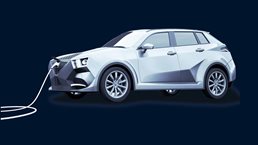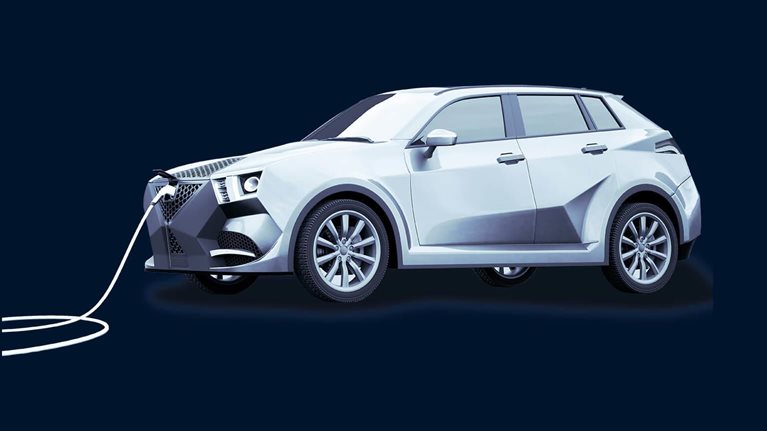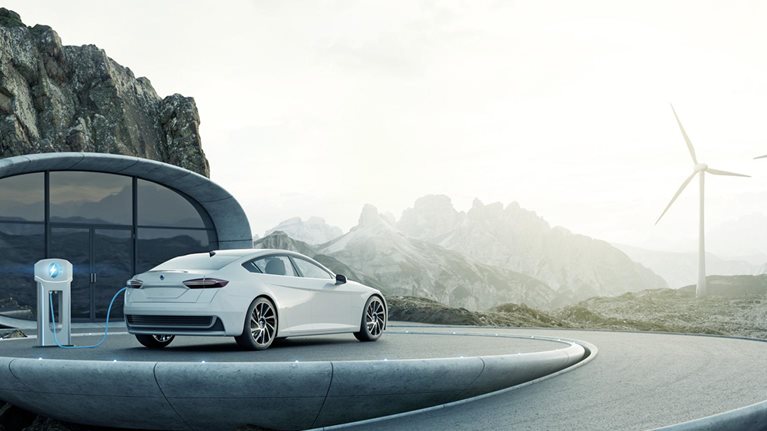The automotive future is expected to feature a complex mix of powertrains, and electric power is likely to play an important role. Today, this trend is most apparent in the four-wheeled segment, where sales of battery electric vehicles and fuel cell electric vehicles are surging. But electrification could also transform two-wheelers1—the mopeds, scooters, motorbikes, and motorcycles that account for about 30 percent of global mobility. These vehicles are an essential link in the transportation network, especially in China, South Asia, and Southeast Asia, with about 45 million units sold in fiscal year 2021.
At present, only a small percentage of two-wheelers are electrified, but many companies have recently entered the market. As with four-wheelers, electrification could rapidly gain traction in this segment and help reduce emissions. To help companies succeed, we examined the electric-two-wheeler market in detail, assessing growth patterns, total cost of ownership (TCO), recent technology advantages, and consumer sentiment. With these insights, we pinpointed the factors that can help OEMs and others succeed in the two-wheeler segment.
The global two-wheeler market is massive
The two-wheeler market is projected to have a compound annual growth rate of 8.7 percent through 2029 when it will reach a value of about $218 billion. Although relatively few two-wheelers are now electric, this could soon change (Exhibit 1). In India, for instance, only about 4 percent of two-wheeler sales in 2021 were electric. Worldwide, however, we project that 30 percent of two-wheelers will be electric by 2030.

While China and the developing world concentrate on smaller, typically work- or transportation-focused machines, North America (excluding Mexico) and Europe are more bifurcated, with premium brands selling more than 500 cubic capacity products. These luxury and high-performance machines stretch into the heavyweight and superheavyweight segments, which consumers typically buy for recreational and sporting purposes. Many of the established brands in these segments have been slow to introduce electric versions of their machines, although some are finally developing their first electric models. Newcomers sensing a market entry opportunity in these potentially lucrative segments have led the way so far. However, cost premiums and range issues linked to battery chemistry and a lack of purchasing scale pose real barriers to converting die-hard high-performance and long-distance riders.
The low electrification rate of two-wheelers has major implications for climate change. In regions where two-wheelers are the main mode of transportation, they consume more than 50 percent of the total gasoline. Moreover, these vehicles account for 5 to 10 percent of CO2 emissions. As more countries attempt to achieve net-zero-emission targets and reduce pollution in cities, the move to electrify two-wheelers could become more urgent. Based on experience with the four-wheeled market, government regulations supporting electric two-wheelers could ignite major change and potentially stimulate sales. China, for instance, leads the world in electric-vehicle (EV) adoption rates because its government has strongly supported the push for electrification.
Greater consumer interest in electric two-wheelers
Traditionally, the rate of electrification has been under 5 percent across all major two-wheeler markets because of several obstacles. These include higher acquisition costs, lower performance in comparison with internal-combustion-engine (ICE) variants, limited product options from incumbents, and the lack of finance and charging ecosystems. However, the segment is poised for disruption, as most of these issues are being addressed.
With significant improvements in battery technology, electric two-wheelers are no longer limited by range. The current energy density of lithium iron phosphate (LFP) and nickel manganese cobalt (NMC) batteries is already between 180 and 250 Wh/kg, respectively, which is capable of giving 80 to 120 kms per charge. Additionally, the TCO of electric two-wheelers is already on par with ICE vehicles in many regions, which are soon set to become cheaper than ICEs.
Battery costs, which have traditionally comprised about 35 percent of the two-wheeler’s bill of materials (BOM) value, are falling significantly as manufacturers attain economies of scale and production efficiencies, along with the general shift toward lower-cost LFP batteries.
Electric two-wheelers benefit from regulatory initiatives like consumer subsidies of up to 25 percent of their costs, surging oil prices, and the fact that traditional fossil fuel subsidies are increasingly being rolled back in various countries. The TCO of locally assembled electric two-wheelers in countries like Indonesia has now reached breakeven and should become even cheaper as the EV industry continues to mature.
Would you like to learn more about the McKinsey Center for Future Mobility?
Customer expectations for engagement have evolved significantly since the COVID-19 pandemic. Automotive companies once competed on the prowess of engineering. The new battleground involves tech-enabled, data-rich consumer experience, where EV companies currently have the upper hand. While young consumers value robust engineering, they also consider EVs an extension of their lifestyles. One EV company’s CEO stated his customers aren’t just buying a vehicle, they are buying a ticket to a new lifestyle. Competing on this new battleground requires a new business model that focuses on recurring sales of services and products. To start with, two-wheeler OEMs will have to adopt a hybrid sales channel that offers the convenience of online product selection and information, along with customization options and the opportunity to take offline test-drives to build trust. This experience should extend beyond sales and stay with the customer throughout the ownership journey in the form of on-call or over-the-air (OTA) vehicle health diagnostics and OTA performance updates, among other features.
Considering these tailwinds, more players have entered the market, increasing the accessibility to these vehicles for consumers. While traditional incumbents have benefited from this market shift, local OEM attackers have experienced significant success based on their agility and ability to understand their consumers. In China and India, in particular, new entrants have performed exceptionally well by focusing on cost leadership strategies.
The rising importance of electric two-wheelers in the investment community
From 2018 through 2022, the size of investment in micromobility has been more than $8 billion.2 While the number of deals has shrunk in the past few years because of COVID-19-infused volatility, the median size of the deals has grown fourfold, from $1 million in 2018 to $4.23 million in 2022.3 Before COVID-19, most of these funds had gone toward low-speed electric two-wheelers such as kickscooters, mopeds, and bicycles. However, high-speed scooters are also attracting investments from private equity and venture capital funds, as well as smart-mobility service providers. For instance, one company that is mainly focused on two-wheelers in India raised more than $1.5 billion in 2022.
Success factors for the electric-two-wheeler market
Entering the electric-two-wheeler space requires a switch for owners who are often motivated more by ease of use, convenience, and price than excitement. To win in this rapidly changing arena, we have identified the following dimensions that electric-two-wheeler players must get right to win (Exhibit 2).

Know the market
Current sales in the electric-two-wheeler segment across major markets remain fragmented and in a nascent stage. Broadly, four types of OEM architectures are evolving in the electric-two-wheeler segment: pure-play OEMs4, EV upstarts5, incumbents,6 and nonautomotive conglomerates.7 Pure-play OEMs have seen extraordinary success in their home markets by offering a tailored, localized product. For example, until fiscal year 2021, new entrants controlled more than 75 percent of sales for electric two-wheelers in India by offering cost-competitive products for less intensive use cases.8 Similarly, EV upstarts have also created a position for themselves by offering best-in-class product and customer experiences. While incumbents are building a play for themselves, they have the advantage of using their legacy capabilities for fast ramp-ups. OEMs that are a part of the nonautomotive conglomerate are also playing in the arena through the inorganic model. On the technology front, two main archetypes are emerging: fixed- or removable-battery architecture. While fixed-battery architecture is more dominant, a select group of OEMs is focusing on swappable architecture.

Capturing growth in Asia’s emerging EV ecosystem
Going forward, the market is expected to evolve toward a mature stage as customers begin to expect ICE-like performance and ecosystem development. While the number of players is expected to rationalize, all four archetypes are likely to remain active. Preferences may differ significantly per country—depending on dominant use cases, TCO, and current product offerings in other power trains. Needs range from different B2B use cases to different machine sizes and design preferences to different infrastructure accessibility. This is where local players can win, designing machines aimed at their specific consumers and considering local range requirements and design preferences.
For instance, while the typical B2C consumer only drives 30 to 40 km per day and will likely do most of their charging at home or in public lots, B2B drivers in logistics or ridesharing sectors ride far longer distances under time pressure and may prefer the option of a battery swap at easily accessible locations such as convenience stores.
Control costs
TCO is the key decision factor for new two-wheeler purchases, making it a prerogative for electric two-wheelers to maintain TCO parity with comparable ICE bikes. This requires a design-to-value approach, optimizing the costs of each bike component to meet the consumers’ needs at the best cost.
Battery cell sourcing is the largest-cost item for electric two-wheelers and forms 30 to 40 percent of the BOM. Key decision points involve the choice between LFP and NMC cell chemistry and the use of a standard or custom form factor.
Most OEMs will have to consider technical parameters as well as supply availability while making a choice. While NMC’s higher-energy density provides superior performance over LFP counterparts at equivalent weights, LFP batteries are not too far behind, boasting superior life-cycle counts, thermal-stability advantages, and lower costs. In one illustration of this point, one four-wheel EV maker has gradually made the switch from NMC to LFP for all standard-performance models. Likewise, some large manufacturers of platform standard batteries for electric two-wheelers have also chosen to focus on LFP options. On the supply side, while cell availability is expected to match or outpace demand in the long term, the split between NMC and LFP capacities is an evolving number.
In-house battery pack manufacturing remains a growing trend and an attractive option for larger OEMs, especially those that seek the flexibility to maximize vehicle performance and safety and improve margins. Vertical integration provides greater flexibility in designing the batteries used for electric two-wheelers, allowing OEMs to make full use of the expertise of multiple partners, ensuring better quality in critical areas such as cleanliness and short-circuit prevention. The vertical integration of battery assembly also provides further value add to OEMs, with battery assembly estimated to be a 12 to 17 percent margin activity.
Some OEMs may prefer platform standard batteries such as those designed and manufactured by key two-wheeler companies, especially if they prefer a battery-swapping model. This can provide battery supply security and resilience, especially for electric-two-wheeler start-ups.
Be present
Even with a cost advantage, buying an EV can be intimidating for a new customer, and buying an EV from an unknown brand can be even more so. This is why brands need to promote their names and actively guide clients through the sales process.
While most big ICE brands have been around for 50 years or more and can rest on their laurels, new electric-two-wheeler OEMs should consider their branding activities carefully. For example, many are launching innovative and assurance-focused campaigns.
Once an OEM’s name is known and customers enter their physical or digital doors, brands must not only build excitement but also educate, engage, and actively guide customers through the process of owning an EV. OEMs should also encourage test-drives and demonstrations along with customer feedback sessions to help build customer engagement and confidence in their electric-two-wheeler products. This process also includes guiding customers through EV financing options to support the high initial up-front costs of these machines.
OEMs should also implement and make available dependable and accessible after-sales support to address any residual questions about servicing, spare parts, and bike conditions. The homologation of the service center and professionals is an important requirement for EVs in most countries. OEMs should start developing the support network along with the early stages of product development. This is especially important in a new industry where repair expertise and replacement parts are not yet widespread.
Make EV ownership easy
It takes an ecosystem to ensure users have access to all the services they need to make their electric-two-wheeler journey seamless. And while ICE players already have this ecosystem, success in the electric-two-wheeler market will require OEMs to build one.
OEMs should actively promote the building of charging or swapping infrastructure, ensuring that users can replenish their batteries just as easily as ICE users can refuel their tanks. The industry must decide whether to swap, charge on the go, or home charge batteries. While swapping provides instant use of the bike, it raises added difficulties with battery ownership. Charging on the go is a simpler option but requires the riders to wait while charging, and home charging provides a cheaper option but is slow.
The correct decision about which mode of battery recharging companies should employ is critical in determining whether a player wins in this space. Targeted end user needs must guide this decision. For example, one company targeted B2B fleets and the ridesharing segment and pursued a swap model to provide speed and convenience to riders. By way of comparison, by principally targeting the private-consumer market, two other players focused on providing home and public fast-charging options.
OEMs should actively build partnerships with financing companies to increase the up-front affordability with B2B players, thus ensuring at-scale adoption, and with after-sales players to offer customer care.
Take charge
The customers shifting to electric two-wheelers are first movers when it comes to this experience. OEMs in the market can use the consent-backed rider and bike data to make the most of product and service improvements. For instance, integrated electronic systems can transmit both vehicle- and rider-based data to improve new product attractiveness and drive efficiency enhancements through predictive maintenance integrated with spare-parts stocking and maintenance slot bookings. OEMs can also push automated software updates and upgrades to offer enhanced performance or convenience-based features. A premium electric-two-wheeler company has sought to establish a peer-to-peer blockchain-enabled bike-sharing customer experience, making it possible for bike owners to share their bikes with other riders securely, either for free or for (crypto) currency payments, providing a unique and integrated customer experience. However, OEMs will have to plan for these offerings during the early phase of product development, as this will require hardware and software capability building.
Scale sustainably
Planned and responsible procurement and manufacturing practices could help OEMs to ramp up sustainably. This could require making important choices in the business-building phase itself. For instance, OEMs may have to align their sourcing strategy toward cell chemistries that are more amiable for recycling and reuse. Similarly, many material choices may be influenced by circularity and green manufacturing. For instance, green steel and aluminum production with renewable energy is vital, with the process today accounting for as much as 10 percent of global emissions.
Create supportive policies
OEMs could leverage policy support in the form of demand and manufacturing incentives but should prepare for a subsidy-free operating and selling model through rigorous cost-saving efforts. For instance, most government subsidies have been reduced or removed completely in markets where EV tech has evolved, like China.9
Given that only about 5 percent of two-wheelers are currently electrified, we expect to see additional waves of innovation and disruption taking place. OEMs seeking to win in this market need to understand the key success factors as described above: know the market, control costs, be present, make EV ownership easy, take charge, scale sustainably, and create supportive policies.


